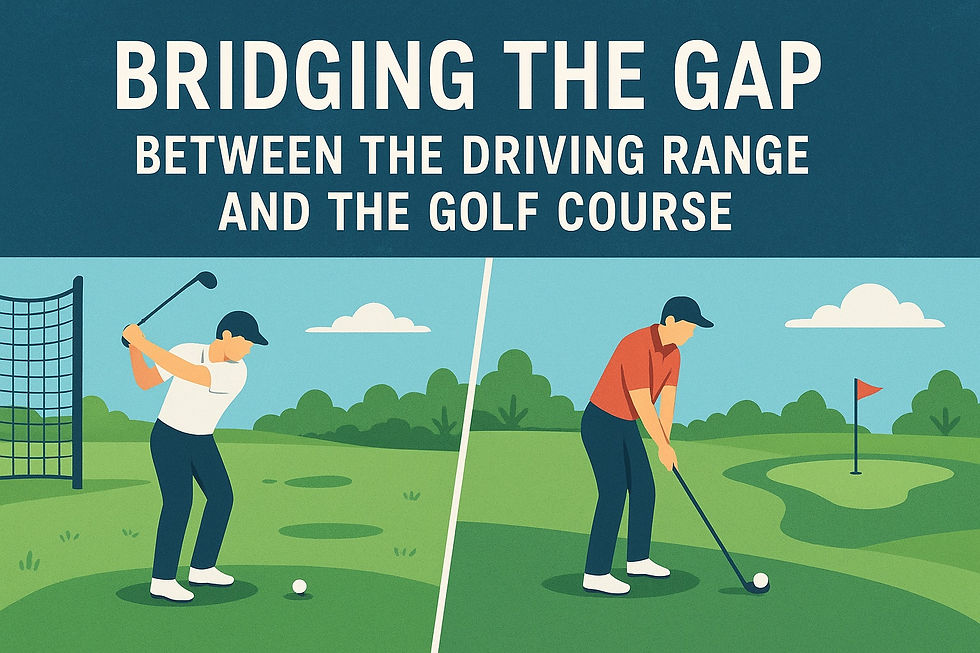The Importance of a Proper Golf Grip: Foundation for a Consistent Swing
- Eric J. Mac Donald

- Feb 10
- 2 min read

A solid golf swing begins with the fundamentals, and one of the most crucial yet often overlooked aspects is the grip. How you hold the club sets the stage for your swing mechanics, ball flight, and overall consistency on the course. In this post, we'll delve into the significance of a proper grip and provide guidance on how to achieve it.
Why the Grip Matters
The grip serves as your only physical connection to the golf club. A correct grip allows for better control, power, and accuracy, while an improper grip can lead to common swing flaws such as slices, hooks, and inconsistent contact. Understanding and implementing the right grip can be a game-changer for golfers at all levels.
Types of Grips
Overlapping Grip (Vardon Grip):
The pinky finger of the trailing hand rests on top of the gap between the index and middle fingers of the lead hand.
Popular among players with larger hands.
Interlocking Grip:
The pinky finger of the trailing hand interlocks with the index finger of the lead hand.
Favored by golfers with smaller hands or less strength.
Ten-Finger Grip (Baseball Grip):
All ten fingers are on the club, similar to holding a baseball bat.
Often used by beginners or those with joint issues.
Steps to Achieve a Proper Grip
Lead Hand Placement:
Place the club diagonally across the fingers of your lead hand (left hand for right-handed golfers).
Wrap your fingers around the club, ensuring the heel pad rests on top.
The "V" formed between your thumb and index finger should point towards your trailing shoulder.
Trailing Hand Placement:
Position the club in the fingers of your trailing hand, below the lead hand.
Cover the lead thumb with the lifeline of your trailing hand.
The "V" formed here should also point towards your trailing shoulder.
Grip Pressure:
Maintain a light to moderate grip pressure.
Gripping too tightly can restrict wrist movement and lead to tension.
Common Grip Mistakes
Too Strong or Too Weak Grip:
A grip that's too strong (rotated too far to the right) or too weak (rotated too far to the left) can cause directional issues.
Palm Grip:
Holding the club in the palms instead of the fingers reduces control and flexibility.
Inconsistent Grip:
Changing your grip between shots leads to inconsistency.
Final Thoughts
Mastering the proper grip is foundational to developing a consistent and effective golf swing. It's worth spending time to ensure your grip is correct, as it influences every aspect of your swing. Consider seeking feedback from a PGA professional to fine-tune your grip and address any specific challenges you may face.
For personalized instruction and more tips on improving your game, visit www.ericjmacdonaldpga.com.
A proper grip is the first step towards a better game.













.jpg)



Comments